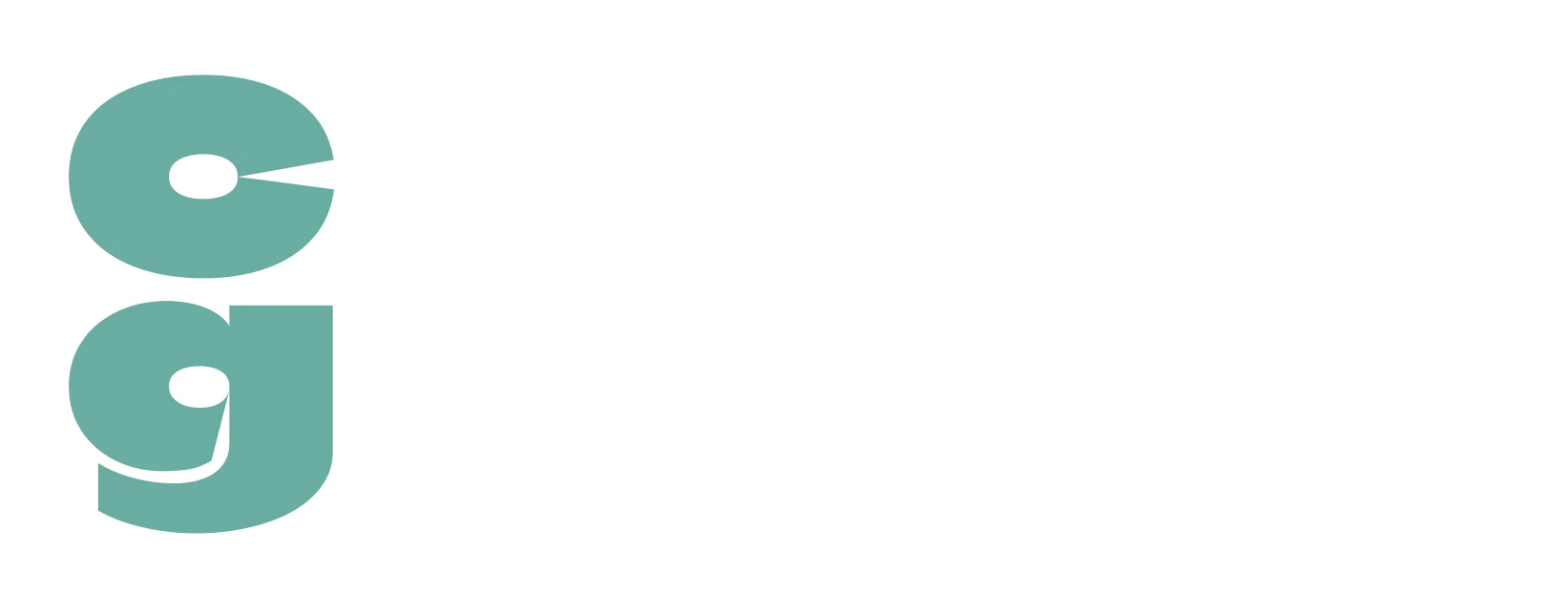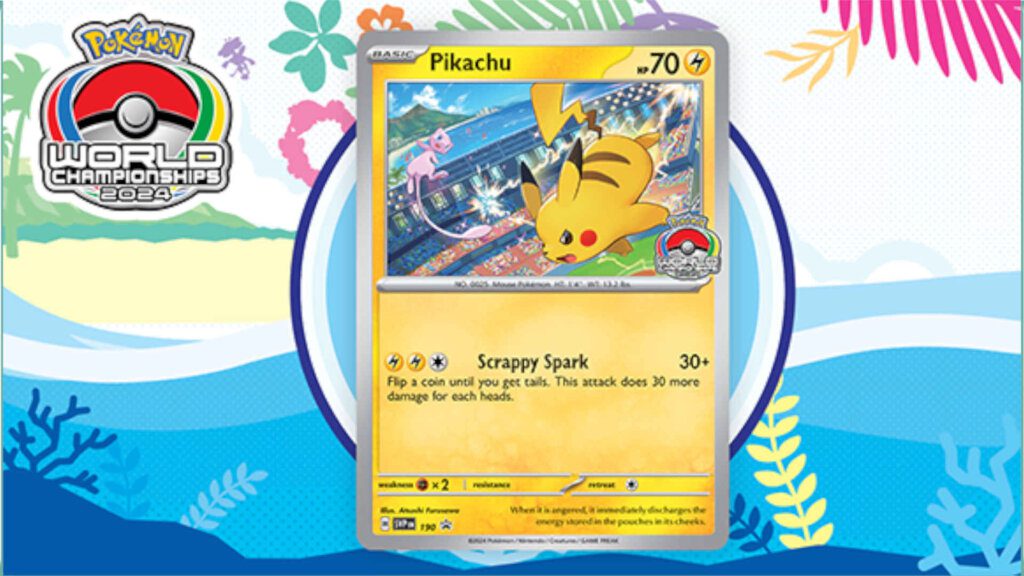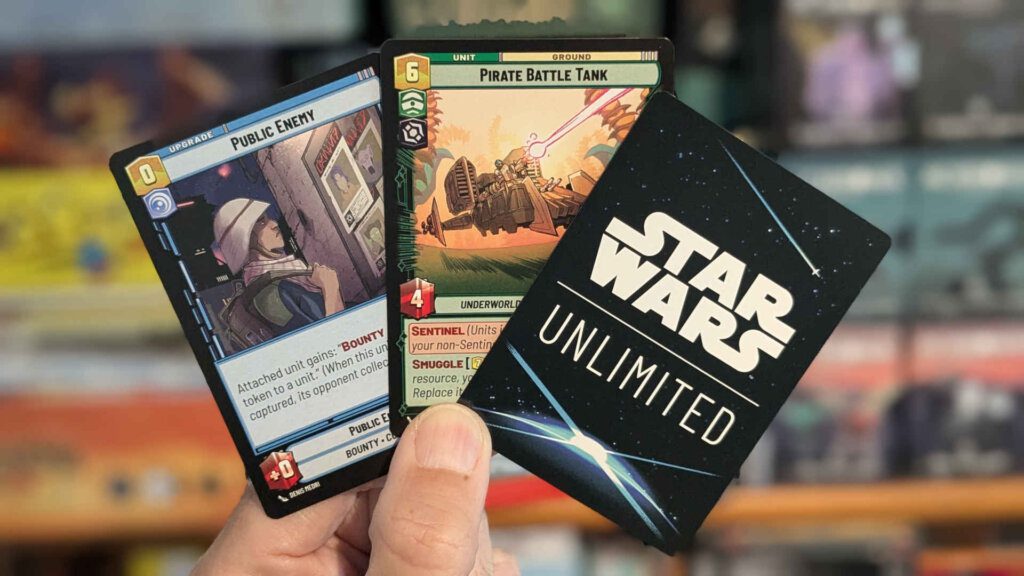As the world’s very first collectible card game (or CCG, sometimes known as trading card games or TCGs), Magic: The Gathering was a revelation when it first appeared in 1993.
Designed by Richard Garfield, Magic: The Gathering (or MTG) – in its standard form, at least – sees two Planeswalkers (that’s you and your opponent; essentially multiverse-exploring wizards) duelling, with the aim being to reduce your opponent to zero life points.
Though the game itself is incredibly simple to learn and play, the fact that there are tens of thousands of cards (and therefore deck possibilities), featuring countless keywords, terminology and lore, can make Magic: The Gathering feel a lot more intimidating to learn than it actually is.
So we’re here to guide you through the basics and get you started.
Let’s check out how to play a standard, two player game of Magic: The Gathering!
Table of Contents
Toggle1. What Do I Need To Start Playing MTG?
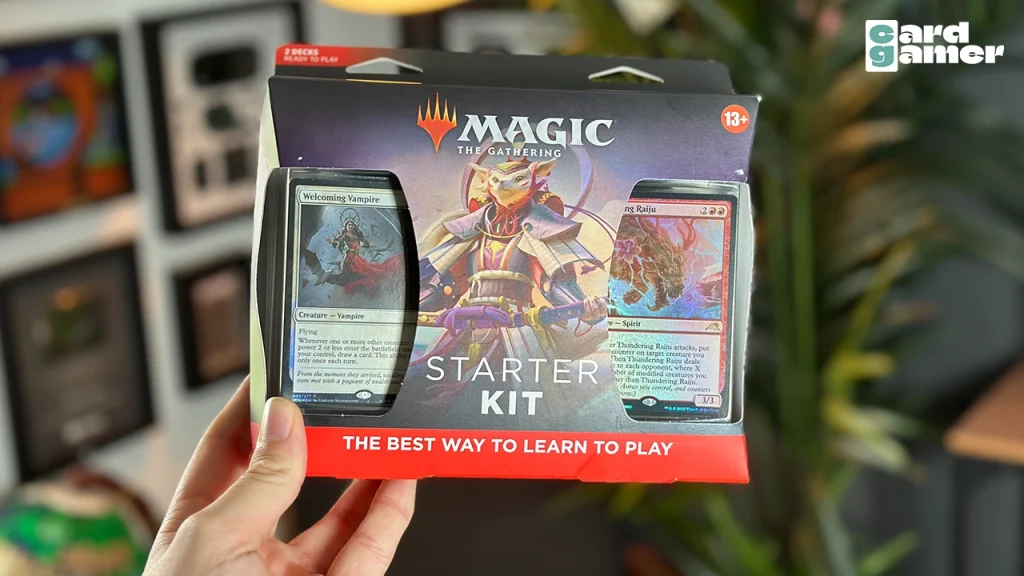
You’ll need a 60 card deck of Magic: The Gathering cards – either constructed or one you’ve built yourself, though the former will likely be the route you choose when learning to play.
We recommend purchasing a MTG: Starter Kit if you are a beginner, it’s an affordable way to get started and comes with two decks to play with a friend.
You’ll also need an opponent who has their own 60 card deck too – though that 60 card specification is the minimum number of cards you’ll need (so technically you can have more cards in your deck if you choose), note that having more cards in your deck will make your deck more inconsistent to play with.
We’d highly recommend sticking to having exactly 60 cards in your deck.
You’ll also need a way to keep track of your life totals, which start at 20.
2. How Do I Start Playing Magic: The Gathering?
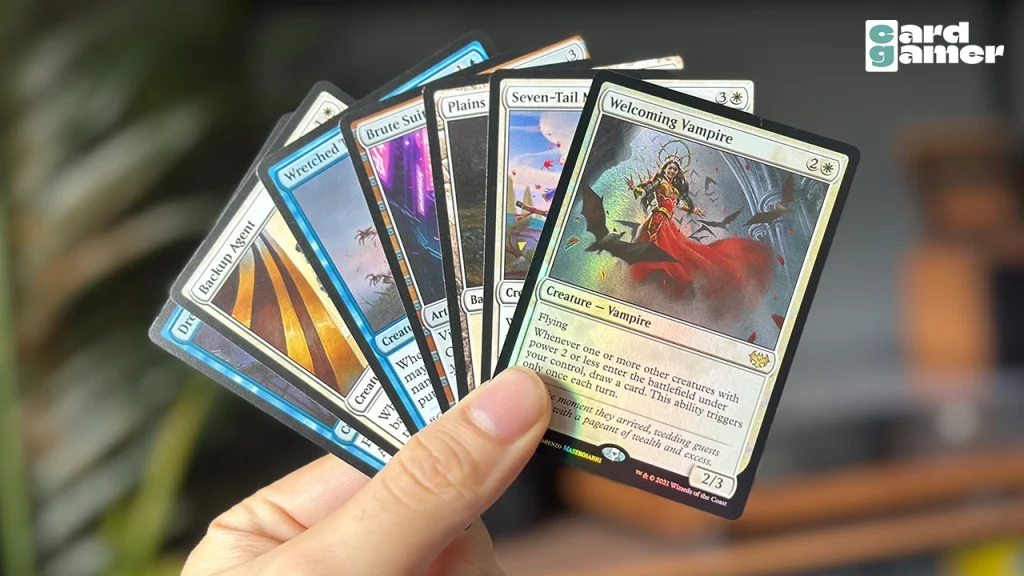

By whatever method you prefer, choose who will go first.
Then shuffle your deck and deal yourself a hand of seven cards. Your opponent will do the same.
You are able to take a ‘mulligan’ and shuffle your opening hand back into your deck, in order to deal yourself a different starting hand of seven cards – but you can only do this once.
If you do need or want to do this again, your starting hand will decrease by one card for each new reshuffle and new hand you deal.
3. What Are The Phases Of A Turn In Magic: The Gathering?
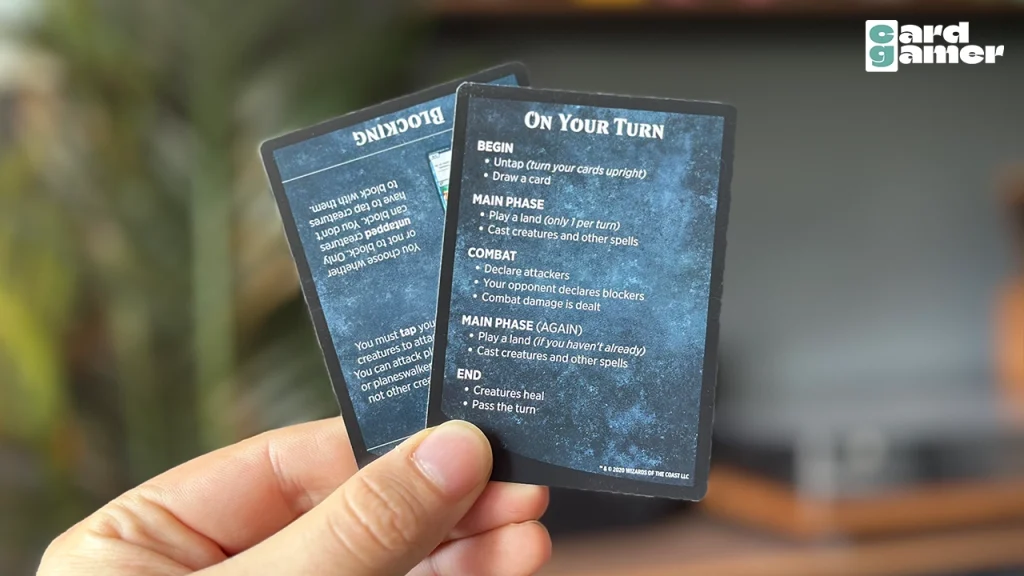

A standard turn in Magic: The Gathering consists of five phases.
These phases are:
- the beginning
- the pre-combat main phase
- the combat phase
- the post-combat main phase
- the end phase
Most cards are played during either of the main phases, but Instant cards can be used at any time (if you have the Mana to pay for them) – even on your opponent’s turn!
Don’t worry, we’ll get to that shortly.
4. What Is The Beginning Phase?
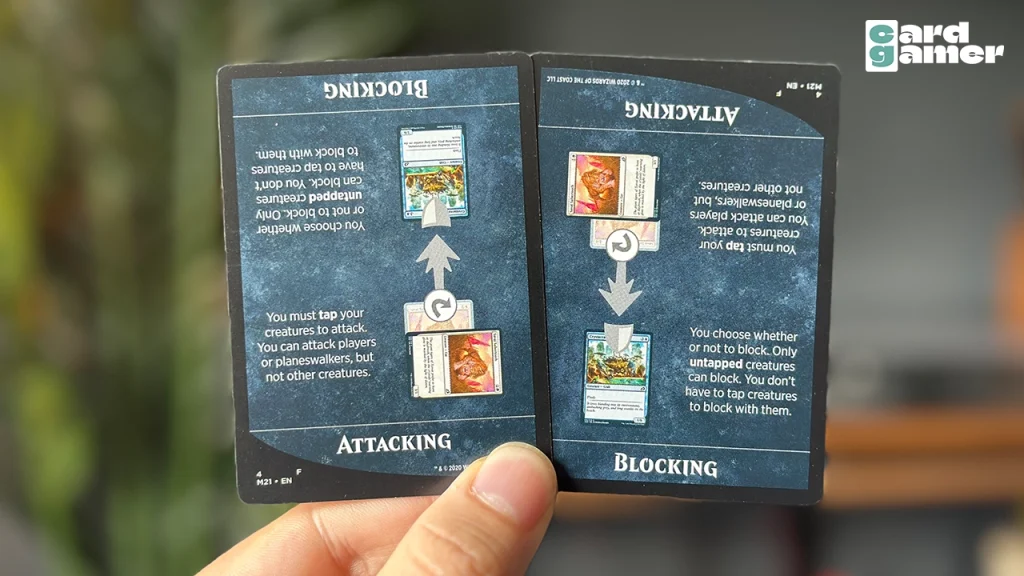

There are three steps to the beginning phase: untap, upkeep and draw.
Untapping means to rotate any ‘tapped’ cards so that they’re vertical again, rather than horizontal. Cards are tapped – that is, rotated 90 degrees – when used and become available to use again during this part of your turn.
Of course, at the beginning of the game, you won’t have any cards to untap!
Upkeep is a step which happens for certain effects on cards – for example, cards which tell you that an effect is triggered at the beginning of your turn or during upkeep specifically.
Drawing is as simple as it sounds: the active player draws a card from their deck and adds it to their hand, though this is skipped for the first player only on their first turn.
5. What Is The Pre-combat Main Phase?
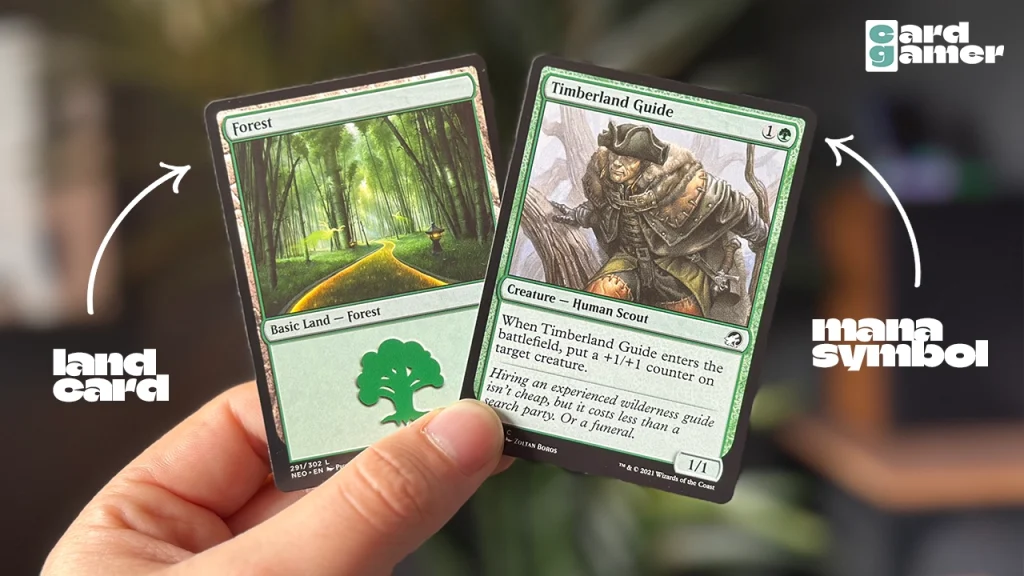

During a turn, there are two main phases, which are broken up by the combat phase.
During the pre-combat main phase, you’ll play cards such as Land (though only one of these can be played per turn), which provides a type of Mana that’s used to pay for other cards.
For example, a Forest Land card will provide one Forest Mana and is played to a row that you’ll have closest to you.
A card’s cost is in its top right corner; if you have a card with one Forest Mana symbol in the top right corner, just rotate your Forest Land card 90 degrees and then play your card in a row above your Land cards.
When you play cards, they may have immediate effects – Sorcery cards, for example, are spells which have an effect either on your or your opponent.
Some can inflict damage directly to a player’s Life total – and if you get your opponent’s Life down from 20 to 0, you win the game!
Creature cards are what you’re most likely to use in order to reduce your opponent’s Life; though you’ll play these like any other card on your turn, including paying Mana to get them in play, you won’t use them until the next step: the Combat Phase!
6. How Do I Carry Out The Combat Phase?
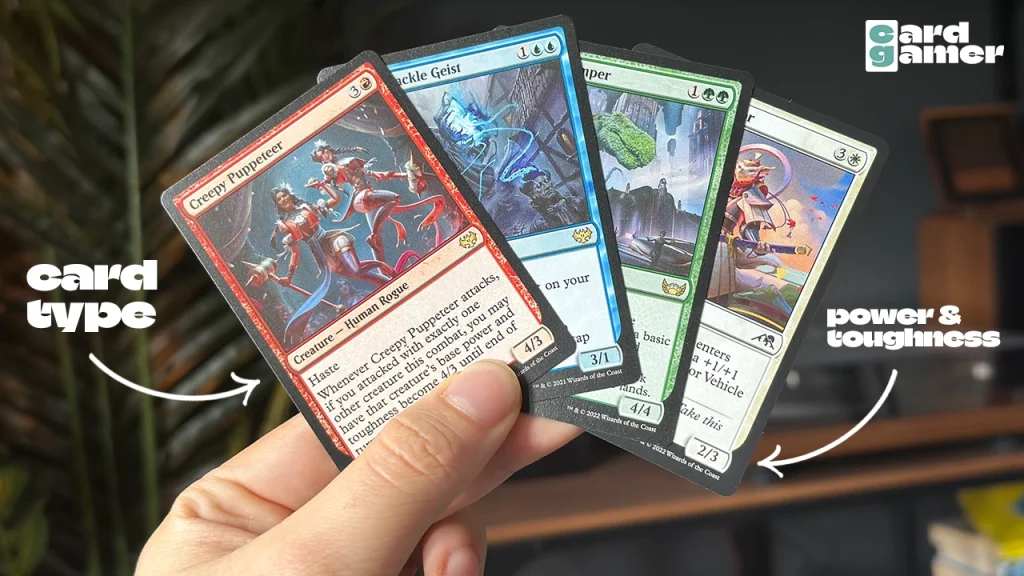

Compared to the other steps of a turn, the combat phase is a little more in-depth; it’s also arguably the most exciting part of any Magic: The Gathering game!
Though you won’t be able to use any creature on the turn you played it (as they have ‘Summoning Sickness’ and take a turn to recover – unless it has the keyword Haste), you can use it to defend against your opponent’s attacks on their turn.
So, in combat, you will choose to attack your opponent using any creatures you have in play.
You declare attackers by moving them forward and tapping them to show that they’re engaging in combat.
Your opponent then has a chance to react with their own creatures, declaring which they’ll use as blockers.
Unlike the active player – who merely declares which creatures will be attacking – the opposing player must choose which attacking creatures they will be blocking; they do this with each creature they will be using to engage in combat.
This is done by tapping each blocking creature and moving them in front of the creature they’ll be blocking.
You’ll notice that creature cards have two numbers, separated by a slash, in their bottom right corner – this denotes their Power and Toughness.
The left number – power – is used as attack strength. The number on the right is Toughness – this is used when blocking.
Attacking and Blocking happens simultaneously unless a keyword changes that (First Strike, for example, will allow a creature to attack and deal damage prior to an opponent’s creature doing the same during combat).
So if an attacking creature with two Power and two Toughness is blocked by a creature with two Power and one Toughness, the attacker deals their two damage to the defender, which would remove it from the board to be discarded – but the defender will still deal their own two damage to the attacker. As the attacking creature also has two Toughness, the attacker would also be killed and then placed on the active player’s discard pile (known in MTG as the ‘Graveyard’).
If no blockers are assigned and no other spells stop an attacking creature from causing damage, the attack goes straight for the opponent’s life total!
So if that 2/2 attacking creature wasn’t blocked, those two points of damage are removed from the opponent’s 20-point life total.
Once all damage has been assigned to attackers, blockers and the opponent, play moves on to the post-combat main phase.
7. What Is The Post-combat Main Phase?
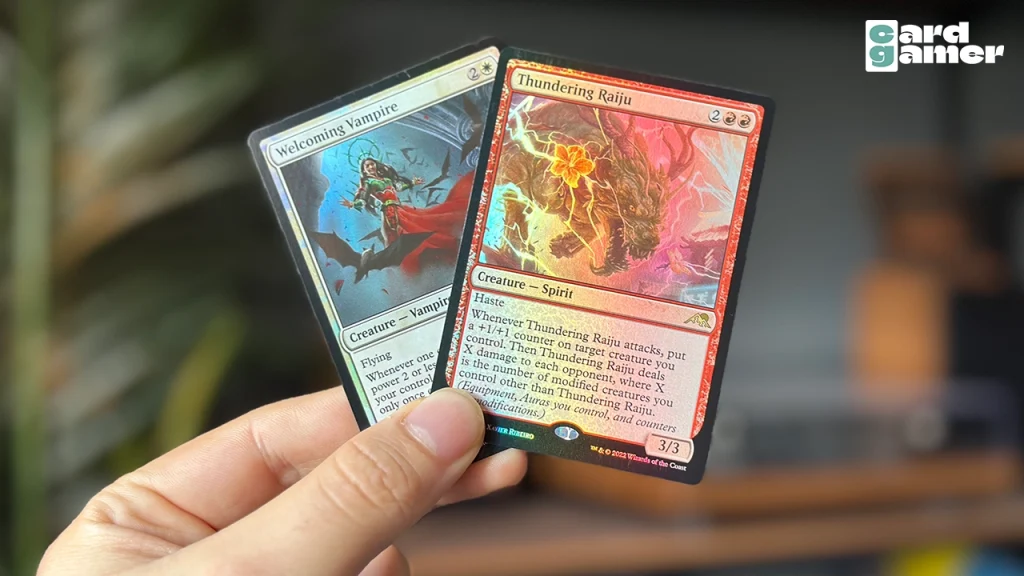

The post-combat main phase is essentially the same as the pre-combat main phase, though it does allow you to shore up your defences and ready yourself for your opponent’s turn – which may be extremely useful after combat, depending on how that turned out for you.
Then it’s time for the end phase.
8. What Happens During The End Phase?
There are two steps to the end phase: end and cleanup.
During ‘end’, you’ll trigger abilities on cards that have the ‘at the beginning of the end step’ or ‘at the beginning of the next end step’ text.
Cleanup is a little more involved – you’ll need to ensure that you have no more than seven cards in hand (7 is the maximum hand size), by discarding cards if necessary.
Then all damage is removed from currently in-play, permanent cards (unless a card ability or text states otherwise).
9. That’s The End Of My Turn – Now What Happens?
Play then passes to your opponent, who follows the same turn pattern as above.
Play continues in this way until one player’s life is reduced to zero – or less!
10. Isn’t Magic: The Gathering More Complicated Than That?
Yes and no.
The basic turn structure is very simple to learn, but – with thousands upon thousands of cards available to use during play – the complications of different keywords, the timing of assigning damage or other effects (known as ‘the stack’), as well as cards such as Instants, Enchantments, Artifacts and special Land cards do all add extra (albeit still rather straightforward) layers of complexity.
However, if you pick up a two player Starter Kit, the cards included will ease you in to learning and give you (and an opponent) a base from which to build your first two decks!
Building your own deck is a huge part of what makes Magic: The Gathering so much fun.
You may also want to check out a few articles on our sister site, Retro Dodo, for some guidance on the best Magic: The Gathering accessories and even best Magic: The Gathering Play Mats.
Each of those articles will point you in the direction of some very useful accessories that’ll make your games a lot smoother – and will allow you to concentrate on playing the game!
Once you’ve played a few games and have the basics in mind, you’ll be ready to explore the enormous multiverse that MTG provides access to.
This article may contain affiliate links. If you use these links to purchase an item we may earn a commission. Thank you for your support.
